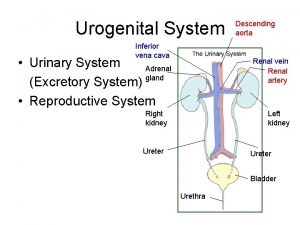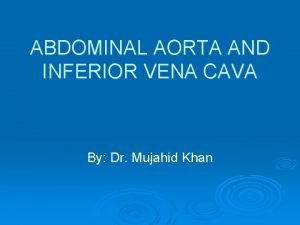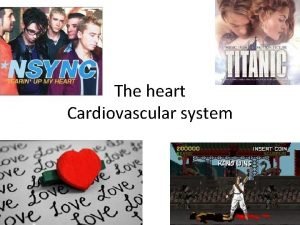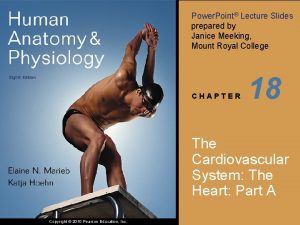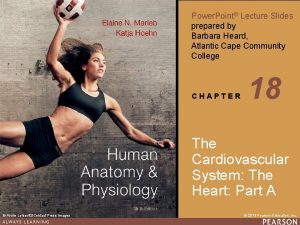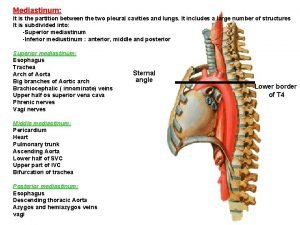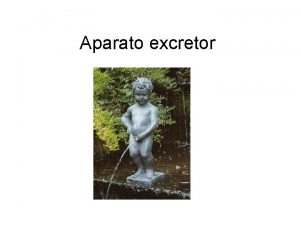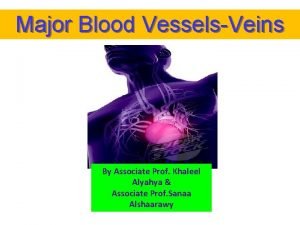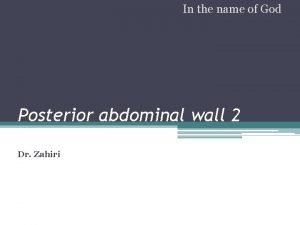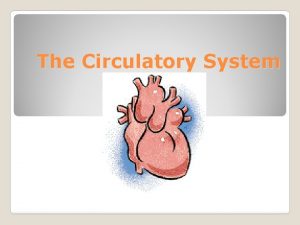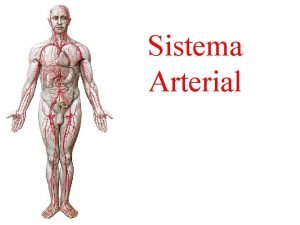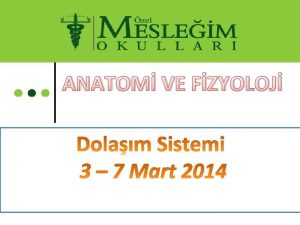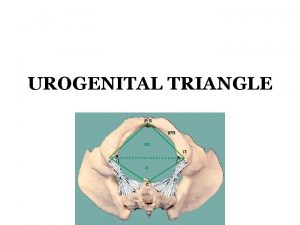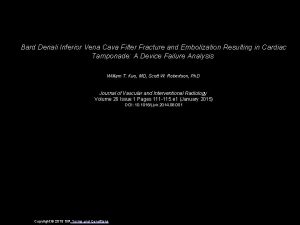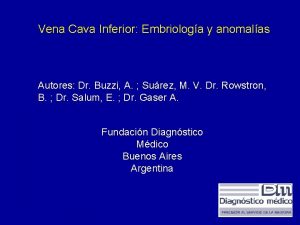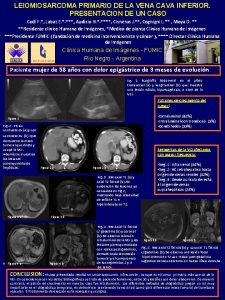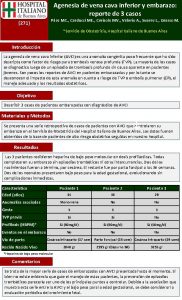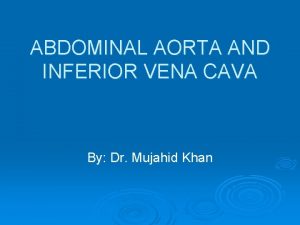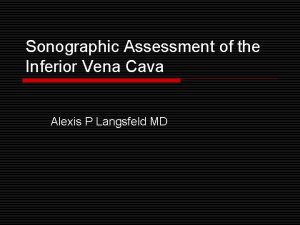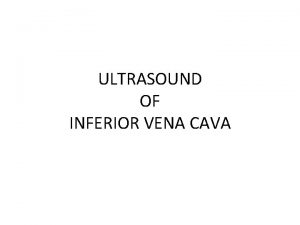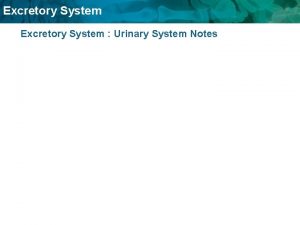Urogenital System Inferior vena cava Urinary System Excretory

















- Slides: 17

Urogenital System Inferior vena cava • Urinary System (Excretory System) • Reproductive System Descending aorta Renal vein Renal artery Right kidney Left kidney Ureter Bladder Urethra

Urinary System • Organs – – Kidneys (_______ excretory organ) Ureters Bladder Urethra • Functions – Remove _________ waste product of protein metabolism and other harmful substances – Eliminates them in the form of ammonia, uric acid or urea – Eliminates controlled amounts of _______ and salts to maintain the internal environment Function is ____ to make urine Function is to maintain _________ of blood (excrete wastes, absorb nutrients, maintain electrolytes, p. H balance)

Rugae


Sends blood to ______ Receives _______% of systemic blood at rest


Nephron Functional Unit of Kidney Glomerulus Afferent arteriole Efferent arteriole Renal Corpuscle


Nephron • Up to ____ million in kidney • Functions – Filtration • removes dissolved substances from ______ (blood supply) • what remains is called the filtrate – Reabsorption • Substances from filtrate leave nephron • Reabsorb ____ tubule into blood or interstitial fluid – Secretion • Releases substances from blood supply or interstitial fluid _____tubule • (opposite direction from reabsorption)

a. a. , glucose, H 2 O, Na+ H 2 O, K+ a. a. , glucose, H 2 O H 2 O Na. Cl H 2 O, urea Filtration Reabsorption NH 3 ADH Secretion

Filtration • Blood pressure forces water and dissolved substances out of the glomerulus blood into _______ capsule • Dissolved substances (_____): H 2 O, glucose, amino acids, electrolytes, and wastes (no proteins or cells) • Averages 125 ml/min for both kidneys (180 liters/day) • The vast majority of the filtrate (99%) must be taken back to body’s ___________. • Urinate (wastes) on avg. 1500 ml/day (______ gallons)

Reabsorption • • The return of substances from filtrate in the nephron tubule to the blood or interstitial fluid Major Substances: – – • • H 2 O - osmosis Na. Cl - active transport Glucose, amino acids - active co-transport Some urea and other salts _____ – most reabsorption Descending loop – reabsorb ____ Ascending loop & DCT – reabsorbs _______ Collecting duct – reabsorbs ______

Secretion • The active release of substances INTO the nephron tubule. • Purposes: – – Secreted Substances: toxins and drug residues Electrolyte balance: K+ exchanged for Na+ Acid-base balance: H+ , NH 3 Antidiuretic hormone (______): produced by posterior pituitary, increases water permeability of the DCT and collecting duct • Cranberry juice – acidifies urine to help discourage bacteria and some types of kidney stones; decrease UTI by inhibiting bacteria from adhering to urinary tract walls

Osmotic Pressure (________)

Urine • _________ – process of urination Normal Urine H 2 O 95% Nitrogeneous wastes urea, uric acid, ammonia, creatine Electrolytes Abnormal Urine Glucose Recent intake of sugary foods, diabetes melitis (Glycosuria) Protein Physical exertion, high protein; hypertension, glomerulonephritis (Proteinuria) Na+, NH 4+, K+, Cl-, PO 4 -3, SO 4 -2 Ketone bodies Starvation, untreated diabetes mellitus Toxins bacterial poisons Hemoglobin Hemolytic anemia, severe burns Pigments products of breaking down RBC, Bile pigments Hepatitis, cirrhosis, bile obstruction filtered from food and drugs Erythrocytes Bleeding due to trauma, kidney stones, Hormones infection, cancer (Hematuria) Leukocytes Urinary tract infection

Internal sphincter – involuntary External sphincter voluntary

Disorders and Diseases • • • Pyuria – _____ in urine Dysuria – _____urination Polyuria – large amounts of urine Oliguria – very little urine Anuria – ____ of urine Renal Calculi – crystallized _____ in renal pelvis or calyx (kidney stones) • Neurogenic bladder – ________ urine retention, bulging bladder, burning sensation • Overactive bladder – frequent urination, pain, oliguria • UTI: _______ infection – Urethritis: inflammation of urethra; result of gonorrhea and Chlamydia; most common in males – Cystitis: inflammation of bladder; more common in females due to shorter urethra – Nephritis: inflammation of ______ • Pyelonephritis – inflammation of renal pelvis • Renal Failure – kidney failure
 Vena cava excretory system
Vena cava excretory system Cadaver
Cadaver Abdominal aorta and inferior vena cava
Abdominal aorta and inferior vena cava Aorta inferior vena cava
Aorta inferior vena cava Trabeculae carneae
Trabeculae carneae Aorta inferior vena cava
Aorta inferior vena cava Mediastinum inferior
Mediastinum inferior Vena cava inferior
Vena cava inferior Hepatic portal vein
Hepatic portal vein Batson plexus
Batson plexus Function a
Function a Chapter 20 urinary/excretory system
Chapter 20 urinary/excretory system Sistema ácigos
Sistema ácigos Sheep heart facts
Sheep heart facts Causes of superior vena cava syndrome
Causes of superior vena cava syndrome Aorta vena cava
Aorta vena cava Lenf sistemi ile dolaşıma katılan besin
Lenf sistemi ile dolaşıma katılan besin Pearson education inc
Pearson education inc
